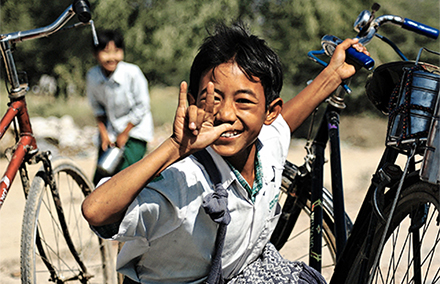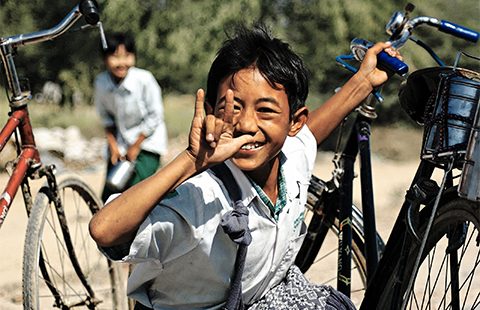
This column was published in The Myanmar Times on Monday, 21 December 2015
This has been a memorable year for Myanmar. It joins the list of big turning points: 1948, 1962, 1974, 1988, 1990, 2010 and now 2015.
Each marks a new chapter in the national story, a break from what came before. 2015 signals the end of the stalemate between democrat and militarist forces.
This year the gradual unwinding of long entrenched positions made it possible for a relatively open electoral contest between the National League for Democracy and the Union Solidarity and Development Party. Both sides have made some compromises.
For the old generals, the acceptance of Daw Aung San Suu Kyi’s political prominence has made their lives much easier. She is no longer judged a threat to national stability.
Her own instincts for conciliation have also galloped to the fore. The Lady has chosen her words carefully, and sought to avoid antagonising conservative interests. This meant disavowing the candidacies of leading democratic activists who wanted to support the NLD cause.
It also meant keeping quiet on the divisive topic of Muslim rights in Myanmar. Her lack of public support for the stateless Rohingya minority – referred to as Bengalis by the government – disappointed a huge number of people. But the reality is that most of them were not eligible to vote in the November poll.
Her strategists’ calculations about the popular mood proved correct. They avoided alienating millions of Buddhist voters and, for better and for worse, in a democratic system the people’s sentiment is what counts. We hope that the NLD eventually has the strength to shape an environment of greater tolerance and inclusion.
But that isn’t what NLD supporters voted for.
Their new democratic mandate is built on a simple truth: the public’s almost universal dissatisfaction with military rule. From that perspective, Daw Aung San Suu Kyi, whatever her flaws, represents the best chance for ending the long-term dominance of the generals in politics.
Even those who were sympathetic to President U Thein Sein’s reformist program could hardly wait to give the fighting peacock a chance. Whether the USDP can rebuild after its embarrassing defeat will, to a great extent, be determined by what happens next.
The big question is: can Myanmar keep getting better?
Regular readers of New Mandala know that during each phase of the reforms there have been doomsayers offering the harshest possible prognoses.
Remember the gloomy predications about the 2014 census and its potential for sparking violence. We should also recall that the census itself was an almost entirely peaceful, if still inadequate, undertaking.
Then this year there have been many occasions when critics have sought to emphasise vulnerabilities in the movement for change. It has always been easy to find fault.
But the facts on the ground suggest the Tatmadaw is very comfortable with surrendering more power to the NLD, and is eager to share responsibility with the party’s leader. They know that she will find the day-to-day grind of governing difficult.
This is why 2015 probably also marks the end of revolutionary ambitions. For many people who have agitated for democratic change it has been hard to accept that the military has managed the political transformation to its own timetable, and with its own interests well guarded.
There has been no revolutionary trigger, no blood on the streets, no vengeance for crimes past.
Given the horrifying possibilities, the relatively smooth management of this transition deserves extra attention. It has put Myanmar on a path to ending civil war, developing democratic institutions and righting a fair number of historical wrongs. None of this was ever guaranteed.
It is the nature of politics that President U Thein Sein and his senior lieutenants in the USDP won’t receive enough credit for their work. There may even come a time, before long, when they will have completely faded from view.
Of course they leave behind unfinished business for the new government, especially on the two primary fault lines: ethnic and religious. A comprehensive nationwide ceasefire agreement will be high on the agenda. Nobody pretends it will come easily, even under the NLD.
Then there is the Rohingya conundrum. Myanmar’s treatment of this minority has not improved. It is very hard to know exactly what the NLD will do in this area, or many others. They have no track record of government on which reasonable guesses can be based.
But what is certain is that, before long, there will be nowhere for the NLD to hide. Its every decision and misstep will be closely scrutinised, even by its friends. This should be regarded as a positive development. And given how smoothly the process has gone up to now, it makes sense to keep a relatively optimistic outlook.
That is how 2015 ends. Whatever the remaining problems, and there are many, it is hard to think of a moment when Myanmar’s prospects ever looked this good.
Nicholas Farrelly is director of the Myanmar Research Centre at the Australian National University and co-founder of New Mandala.
 Facebook
Facebook  Twitter
Twitter  Soundcloud
Soundcloud  Youtube
Youtube  Rss
Rss 